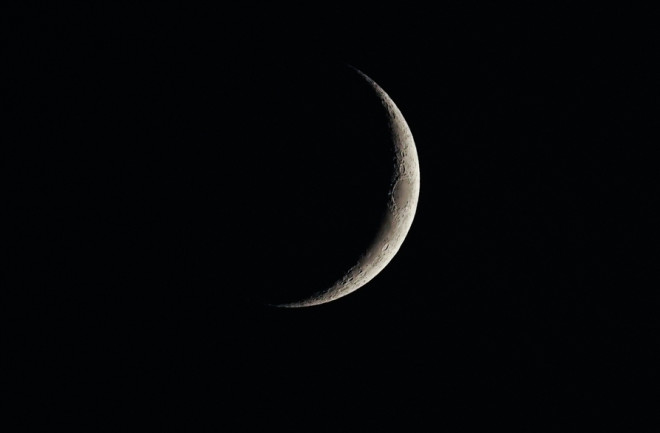Throughout history, humans have recognized that the night sky has the ability to mark moments of significance. For Muslims, for instance, the sighting of the moon has long signaled the start of the month of Ramadan, a period of fasting and religious reflection that traces its roots to the seventh century C.E.
Since then, Muslims have turned to the skies to guide their Ramadan observances. So how, specifically, has astronomy informed the traditions of Ramadan, and how has that changed over time?
Read More: Why Astronomy is Considered the Oldest Science
What Is Ramadan?
The ninth month in Islamic tradition, Ramadan is a time of religious renewal. It represents a part of the Islamic lunar calendar, also known as the Hijri calendar, a 12-month calendar of around 354 days that aligns with the monthly cycles of the moon’s phases. During Ramadan, many of the world’s approximately 1.8 billion Muslims fast from dawn to dusk, with the observance of fasting being one of the five “Pillars of Islam,” alongside the profession of faith and the practices of prayer, alms, and pilgrimage to Mecca in modern-day Saudi Arabia.
In addition to forgoing food and drink, many Muslims also abstain from sexual activity during the days of Ramadan and perform special prayers and recitations from the Quran, according to the Islamic Networks Group.
For many, the month is a time of religious introspection, self-reflection, and self-restraint, meant to commemorate the moment that the Quran was first revealed during one of the final 10 nights of the month in 610 C.E., on Laylat al-Qadr, or the “Night of Power.”
Read More: How Humans Perceived Lightning Throughout Time
When Is Ramadan?
Because it is based on the Islamic lunar calendar, which is around 11 days shorter than the Gregorian calendar, the timing of Ramadan shifts throughout the Gregorian year. Instead of sitting in a specific season, the month migrates through the seasons, moving up by around 11 days on an annual basis, the Islamic Networks Group states.
For instance, while Ramadan was predicted to land between mid-October and mid-November in the year 2004, the month was predicted to land between late-June and late-July a decade later, in the year 2014.
In 2024, Ramadan was anticipated between March 11 and April 9, according to the Islamic Networks Group, though the actual start of the month differed by about a day from location to location, as it typically does, depending on who observed the moon, when, and where.
That’s why the timing of Ramadan is initially predicted: The traditional start of the month requires the sighting of a specific phase of the moon, and is sometimes left to local authorities, like the leaders of local mosques, or to members of moon-sighting committees like the Central Hilal Committee of North America to announce. (This year, the Central Hilal Committee declared March 12, 2024 as first day of the month.)
When Does Ramadan Start?
Traditionally, Ramadan starts when those authorities observe the first signs of the new crescent moon, around a day or two after the new moon, meaning that clear skies in one area and cloudy skies in another could alter the month’s specific starting time. In turn, Ramadan stops when those authorities observe the first signs of the next new crescent moon, approximately 29 to 30 days later. According to the Islamic Society of North America, if a sighting of the crescent moon is not possible at that particular time, the month will come to a close after 30 days of fasting.
The Sighting of the Moon for Ramadan
Though traditionally dependent on direct sightings, many Muslims are now starting and stopping their Ramadan observances according to pre-determined dates, rooted in astronomical calculation rather than observation, the Islamic Networks Group states. The switch reflects shifting approaches to determining when the crescent moon is and is not visible. That being said, the timing of the tradition is still deeply ingrained in astronomy, and has remained so for centuries.
Read More: An Omen Of Doom And Other Myths Surrounding Solar Eclipses
Article Sources:
Our writers at Discovermagazine.com use peer-reviewed studies and high-quality sources for our articles, and our editors review them for accuracy and trustworthiness. Review the sources used below for this article:
Science News. Ancient Humans Used the Moon as a Calendar in the Sky
Britannica. Ramadan
Britannica. Islamic Calendar
Pew Research Center. The Changing Global Religious Landscape
Islamic Networks Group. Ramadan Information Sheet
Britannica. Laylat al-Qadr
Islamic Networks Group. Ramadan and Fasting Presentation
Central Hilal Committee of North America. Ramadan 1445 AH
Islamic Society of North America. Ramadan
Scientific Reports. Predicting New Crescent Moon Visibility Applying Machine Learning Algorithms

